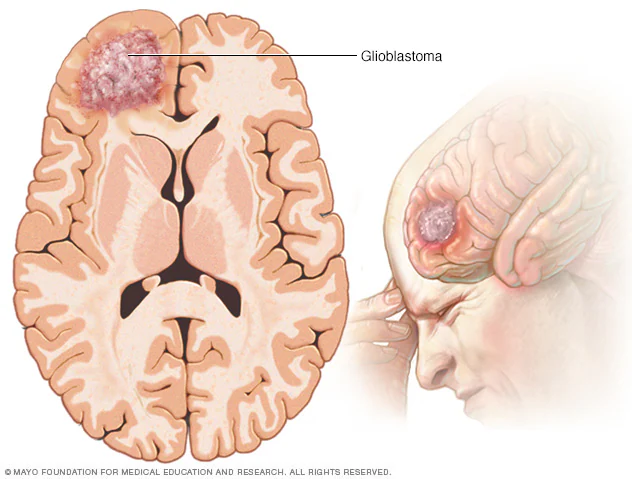A bad headache can be scary, especially when it lasts for a long time or recurs frequently. You may start wondering if it’s a sign of something serious, like a brain tumor. But how can you tell the difference between a typical headache and one caused by a brain tumor?
When Could a Headache Be Due to a Brain Tumor?
These are common among the general population, and the vast majority have nothing to do with brain tumors. However, experts recommend that if you experience a new headache with a changing pattern or increasing frequency, it is a good reason to visit your primary care doctor to rule out any serious issues
Headaches Caused by Brain Tumors
Tumors and other mass lesions can cause headaches by directly pressing on brain structures, such as blood vessels, nerves, fluid channels, or the meninges. Severe headaches from brain tumors may result from elevated intracranial pressure due to hydrocephalus, the tumor’s mass effect, or bleeding into or around the tumor.
Headaches are present in about 20% of patients at the time of a brain tumor diagnosis. During the course of the disease, headaches occur in 48% to 60% of patients.
How Brain Tumor Headaches Differ from Other Types
There are several common types of headaches, including tension-type headaches, migraines, cluster headaches, and sinus headaches. Brain tumor-related headaches tend to differ in certain key ways:
Brain tumor headaches are more commonly seen in young females with tumors, though brain tumors in adults are most frequently diagnosed between the ages of 40 and 60.
Not all brain tumors cause headaches. Only tumors large enough to press on nerves or blood vessels typically lead to headaches
Brain tumor headaches often worsen with changes in position and tend to progressively get worse over days or weeks.
Symptoms of Brain Tumors
General Symptoms
- Headaches (worse in the morning)
- Nausea & vomiting (due to increased intracranial pressure)
- Seizures
- Cognitive & personality changes
- Focal neurological deficits (weakness, vision changes, speech difficulties)
Tumor-Specific Symptoms
- Ependymoma (4th ventricle) → Obstructive hydrocephalus
- Pinealoma → Parinaud’s syndrome (vertical gaze palsy due to midbrain compression)
- Pituitary/Hypothalamic tumors → Hormonal imbalances
- Glioblastoma Multiforme (GBM) → Rapidly worsening symptoms due to aggressive growth & necrosis
- Sudden tumor hemorrhage can mimic a stroke (CVA).
Brain Tumor Growth & Metastasis
Growth Pattern
- Most brain tumors are slow-growing, so necrosis is uncommon.
- Exception: GBM grows rapidly, leading to necrosis and bleeding.
- GBM can spread across the corpus callosum, giving a butterfly appearance on imaging.
Metastasis
- Brain tumors rarely metastasize outside the CNS.
- Instead, they spread within the brain and cerebrospinal fluid (CSF).

If you experience any of the following symptoms along with a headache, you should seek medical attention immediately:
- Headache associated with visual or hearing problems
- Weakness on one side of the body
- Memory disturbances
- Difficulty speaking or understanding others
- Feeling like one leg is dragging or needing to keep feet very far apart while walking
- Numbness or weakness on one side of the body
- Difficulty following simple commands, such as “Touch your nose” or “Hold up three fingers”
- A headache that is different from any previous headaches, especially if it worsens when changing positions
- A progressively worsening headache over days or weeks
- A headache associated with seizures, whether full-body seizures or ones affecting just one arm.
Final Thoughts
If you experience any of these warning signs, do not ignore them. While most headaches are not caused by brain tumors, it is always better to consult a doctor if you have concerns
Disclaimer: The information in this video is for educational purposes only. It is not a substitute for professional medical advice, diagnosis, or treatment. Always consult your doctor for any health concerns.

3 Responses
[…] What Is Migraine? Understanding the Basics […]
[…] Diagnosis and Treatment of Primary Brain Tumors […]
[…] Stroke Risk factors : Why Understanding Is Important […]